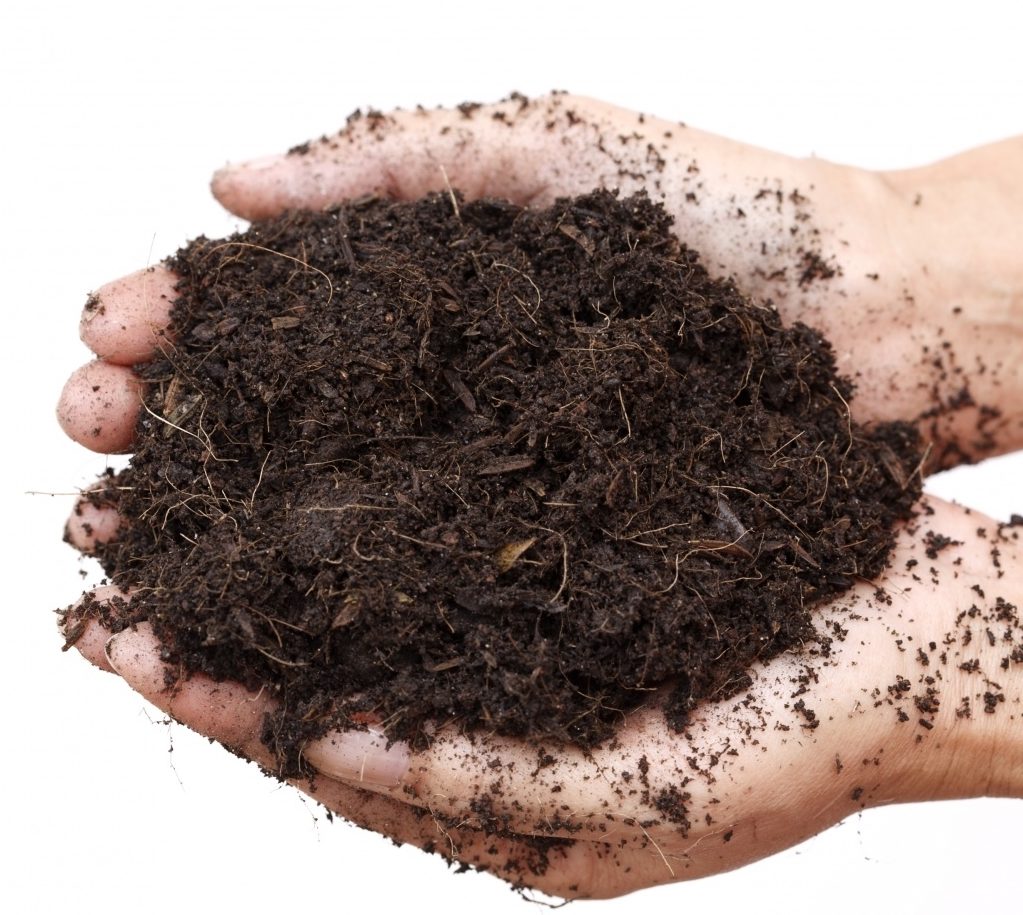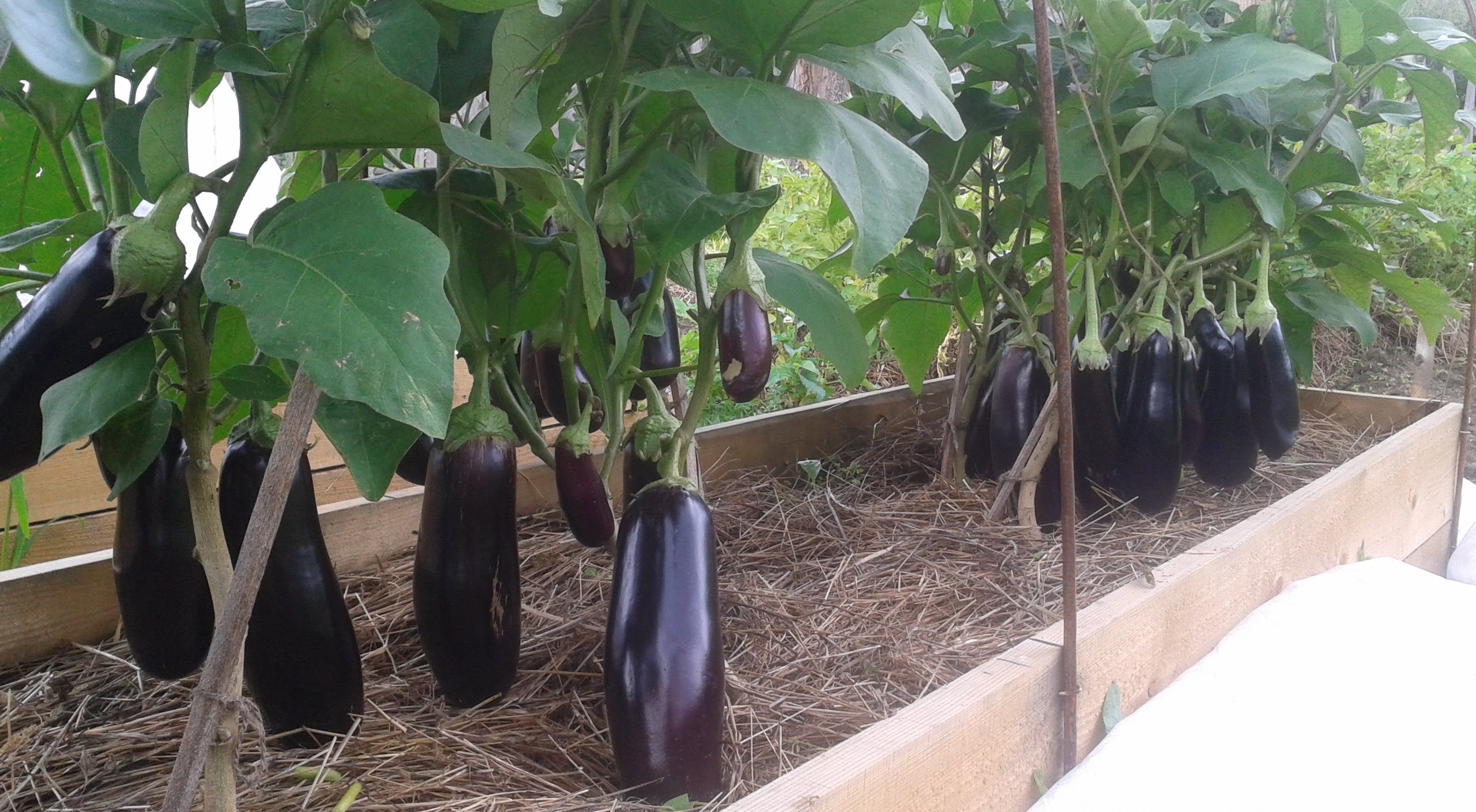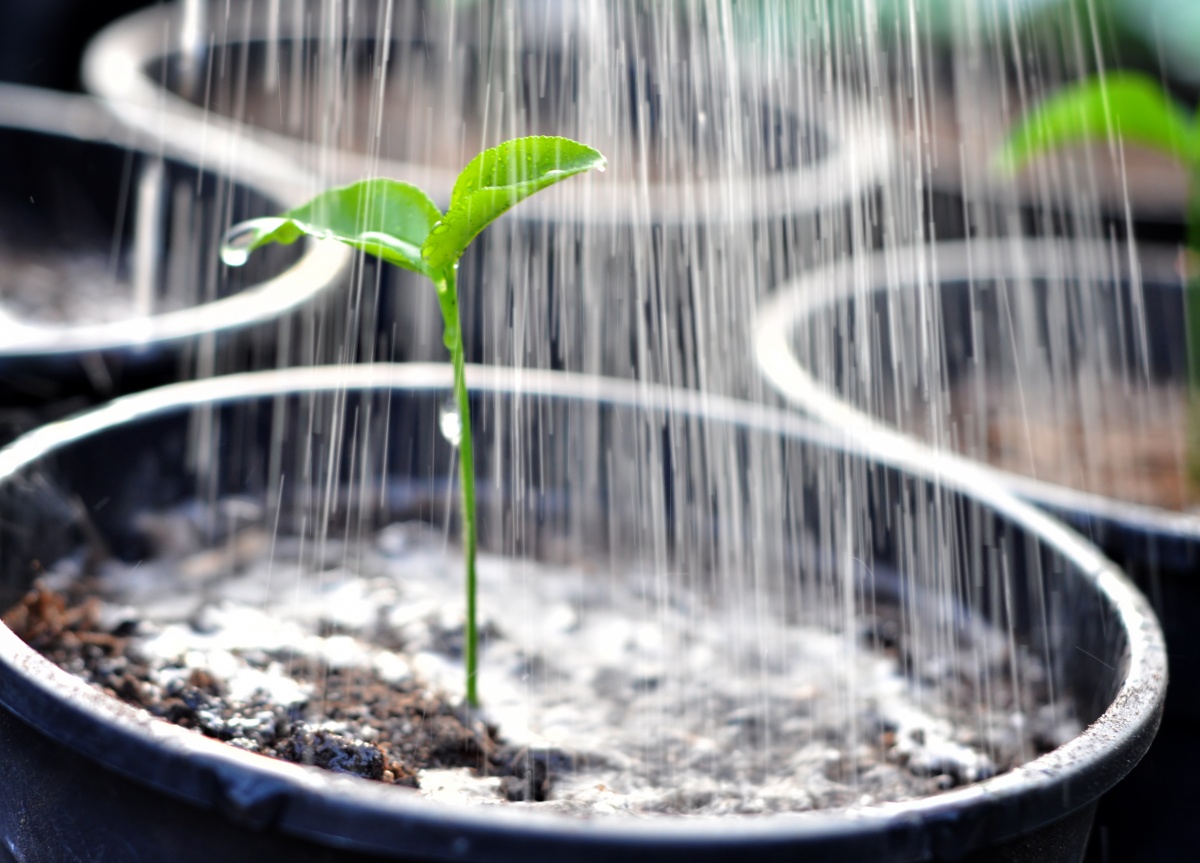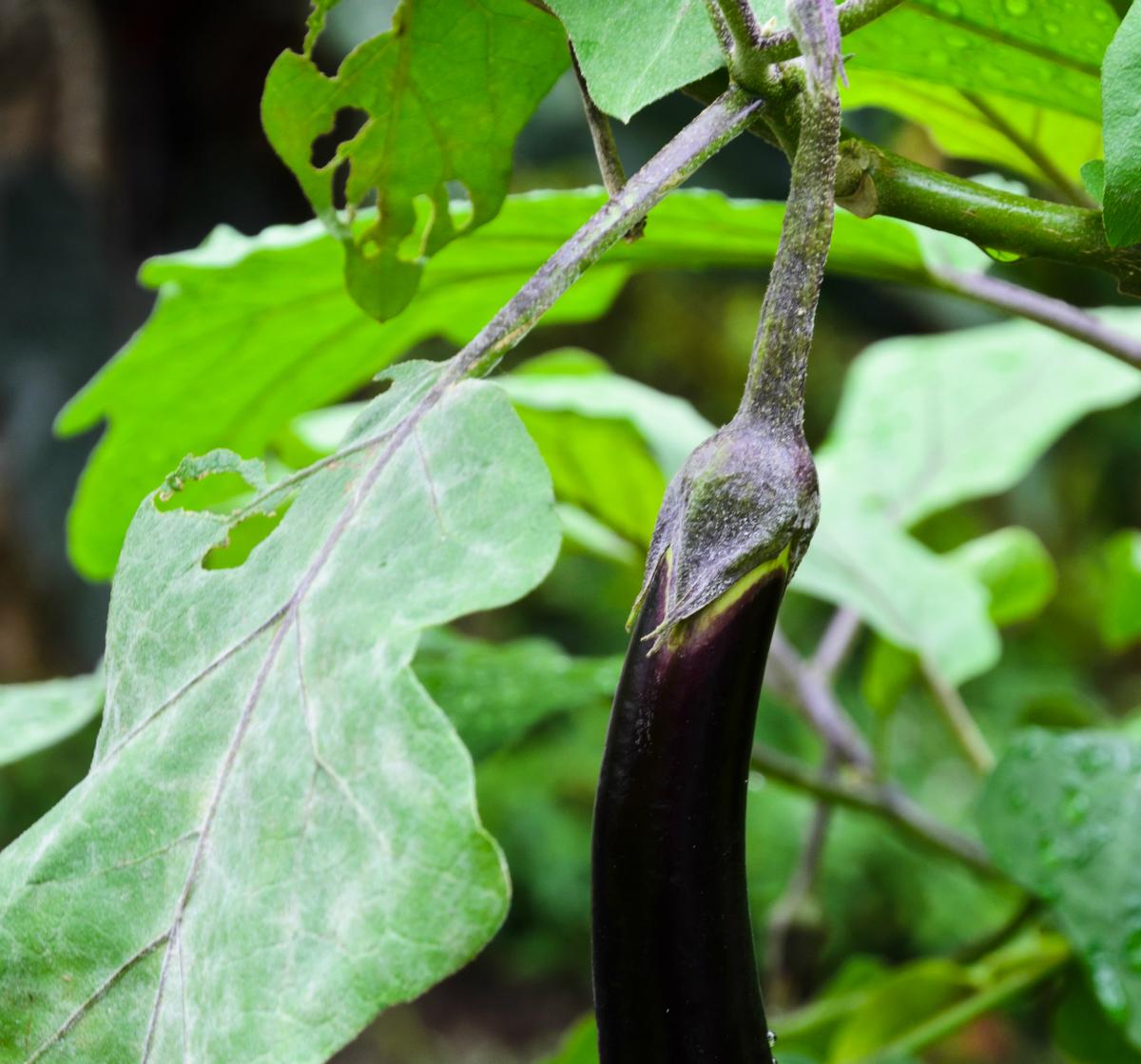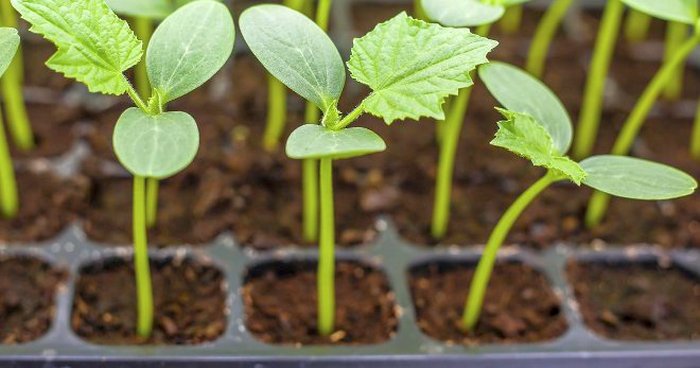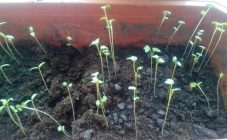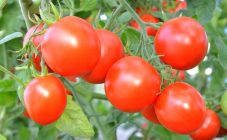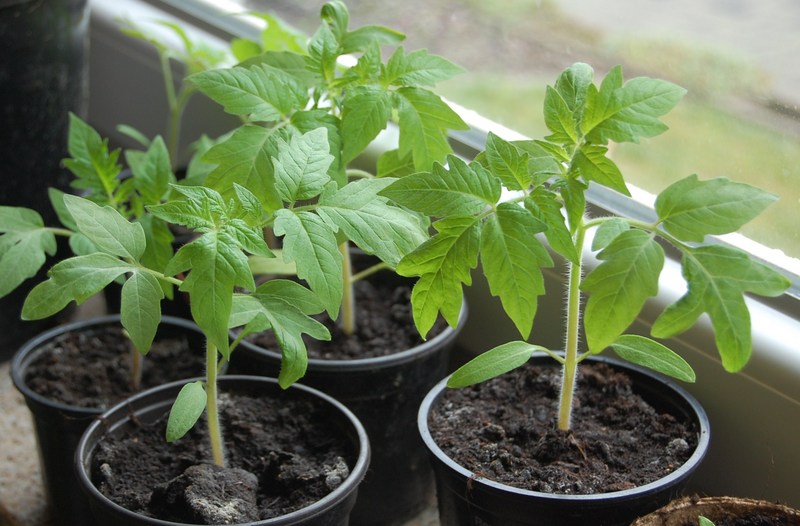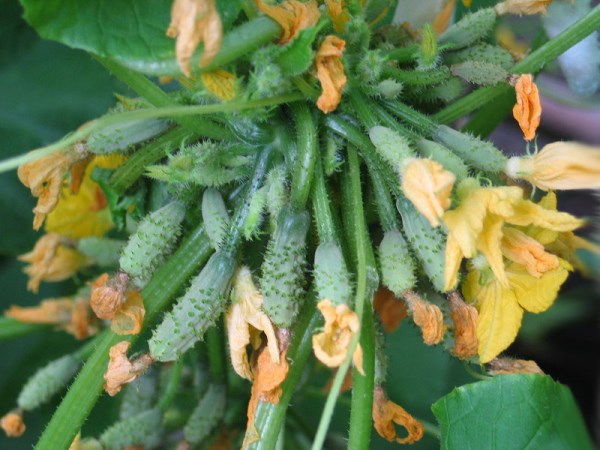Eggplant is a very capricious culture, it requires careful care from the grower. Both adult plants and seedlings can suddenly wither. If eggplant seedlings grow poorly, what to do and what measures can be taken?
Conditions for growing eggplant seedlings
Eggplant seedlings can be grown outdoors or at home on a windowsill. In the open field, blue seedlings grow only under film shelters. Only those varieties are suitable for this purpose that can easily tolerate the temperature drops characteristic of early spring. The site is being prepared in the fall, for this organic matter is scattered over all the beds:
- deciduous humus,
- compost,
- manure,
- chicken droppings.
After that, the garden is dug up so that all organic fertilizers are hidden under the soil layer. With the onset of warm spring days, weeds are removed from the garden and the soil is again dug up. Even before sowing the seeds, the beds are preventively treated against pests and pathological fungi.
For eggplant seedlings, make a rectangular bed. A site with a width of 0.7 to 1 m and an arbitrary length is fenced with boards. The bottom of the bed is laid out with plastic wrap. Then the soil mixture is poured into the fenced area. Shortly before planting the seeds, the soil is watered with mullein solution and leveled with a rake.
Before sowing, the soil must be treated with antiseptics, it can be a slightly pink solution of potassium permanganate or any other drug purchased in a specialized store. Preventive soil treatment will help to avoid contamination of plants with infectious diseases.
Wire or plastic arcs are installed over a high bed, on which a plastic film is fixed. The film cover is fixed in such a way that it can be slightly opened.
Seeds prepared in advance and prepared for planting are planted in peat cubes, which are then placed in prepared holes. You can sow blue seeds for seedlings in open ground after the soil warms up to + 14 degrees.
The film on tunnels with crops is slightly opened for a day for airing. At night, the seedlings are covered again. The shelter is removed when the threat of the night frosts characteristic of spring has completely disappeared.
Seedlings are watered with warm water from a spray bottle. You cannot pour water from a bucket onto young shoots. Watering is carried out regularly, as the soil dries up. Plants can be planted after they reach the age of 70-80 days. If this is done earlier, the yield will be halved.
Why eggplant seedlings grow poorly
Problems with blue seedlings occur often. This vegetable is very picky about growing conditions, it grows poorly and withers if:
- during the pick, the roots of the seedlings were damaged;
- the pest eats up the seedlings;
- eggplant bushes are infected with infectious diseases;
- the soil lacks nutrients;
- watering the beds is carried out incorrectly;
- the air temperature is below +20 degrees.
Seedlings do not grow due to mechanical damage to the roots
It is possible to understand that the plant died due to damage to the roots if the green bush, without changing color, completely wilted immediately after transplantation. Usually the root system is damaged during a dive. To avoid this, it will be more correct to grow seedlings in a ready-made peat container. A peat cup is planted on the garden bed together with the plant without picking.
If the seedlings are planted in ordinary seedling boxes, in order to avoid damage to the roots when picking, you need to fill the seedlings with water two hours before transplanting. This is done so that the soil is well soaked and the roots can be removed from the soil without damaging them. If there is enough space between the plants, it is better to move the sprout together with a lump of earth.
Seedlings wither due to improper watering
You need to water the eggplants two to three times a week so that the soil in the beds does not turn into a swamp, which, as a result, begins to rot the root system. In such conditions, the plants begin to wither and wither.
The solution to this problem is quite simple. To do this, you need to reduce the number of waterings.
I can also wilt eggplants in the case when the quantity and quality of watering for plants is not enough.
If you do not take action, the plant will begin to dry out and the stem will fall.
Eggplant leaves wither and turn yellow due to lack of nutrients
If the soil lacks the substances necessary for seedling, the seedlings tend to grow upward due to their own lower leaves. At the same time, the foliage on the lower tiers becomes pale, withers, turns yellow and begins to fall off. Having exhausted their resources, the seedlings will die.
To correct the situation, the seedlings need to be fed. In specialized stores there are ready-made mixtures containing a set of minerals necessary for the normal growth of eggplants. They are introduced into the soil according to the instructions.
An overabundance of mineral fertilizers is indicated by light spots on the leaves, which appeared immediately after abundant feeding. To partially neutralize the surplus, the plants need to be watered with a slightly pink solution of potassium permanganate, and the leaves should be washed with a solution of citric acid and ferrous sulfate (1 gram of acid and vitriol is taken for one and a half liters of water).
The air temperature is below comfortable
It so happens that the eggplant seedlings do not grow, but literally stand still. What to do and what are the reasons?
Eggplants (blue) are among the most heat-loving crops. They need heat and sunlight even more than cucumbers and tomatoes. If the air temperature remains below + 20 degrees for some time, they stop blooming and form ovaries. If the cold snap is delayed, the eggplant bushes begin to fade gradually.
How to treat infectious seedling diseases
Seedlings can dry out, wilt and turn yellow due to infectious diseases. Most often, the infection enters the ground along with infected seeds. The most common enemies of eggplant are:
- Verticillosis. Fungal disease. The affected plant begins to wilt. Yellowness spreads along the leaves of a diseased seedling from veins. The dying plant looks like it was doused with boiling water.
- Fusarium. Fungal disease. The leaves of the diseased plant are yellow, with veins of a light milky hue. The stem is brown on the cut, and pinkish bloom on the roots. Affected seedlings stop growing and gradually die.
It is not worth waiting for the plants to cope with the infection themselves or to be able to outgrow. If things are left to chance, very soon the seedlings will completely die. To save seedlings, you need to take the following steps:
- urgently transplant healthy plants to a new place (garden bed, seedling box);
- to process seedlings with one of the preparations: Previkur, Rovral, Topsin;
- feed the plants.
It is very difficult to cure plants with infectious diseases. Most often, fungal infections lead to the death of seedlings. For this reason, it is necessary to carry out preventive treatment:
- soil,
- seed,
- seedling boxes.
The infection enters the room along with the soil purchased from the store or with infected seeds. Therefore, the acquired planting material and soil must be treated with antiseptic agents.
Preventive treatment will help protect seedlings grown in garden beds from harmful insects. To destroy the larvae living in the ground, the beds are watered with boiling water before sowing and treated with biologically active preparations.
It is advisable to water the beds abundantly a few days before sowing, if after that the next day passages and holes are found in the soil, it means that a bear and other pests have settled in the garden. In each hole you need to lay bait with poison.
These measures will help preserve seedlings and get an excellent harvest.
